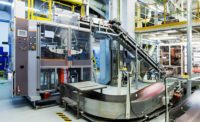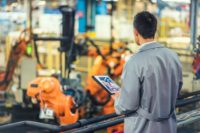To achieve optimal workplace safety standards, factory layouts should be well-designed to prevent various workplace hazards. In addition, they are beneficial for improving the productivity of employees and machinery.
The layout dictates the sequence of various operations, amount of movement, and exposure to workplace hazards. Rethinking factory layout design considers several aspects of routine processes, including building designs, the type and complexity of workflows, and the number of movable assets and personnel within enclosed spaces.
Optimizing factory layout design can significantly reduce accidents and injuries in manufacturing for improved productivity, lower operational costs, and better compliance with statutory regulations.
Here is how to rethink factory layout design for improved safety in facilities:
Analyze workplace hazards
Companies should analyze and understand the existing workplace hazards before embarking on factory layout redesigning. Consider conducting a safety audit to identify and categorize factory hazards and explore how they compromise facility layouts and impact safety standards. Hazard analysis enables companies to evaluate compliance with statutory regulations and corresponding legal obligations. Understanding the effects of several hazards provides insights for designing more effective factory layouts.
Hazard assessment is an inclusive process that demands the involvement of all employees in a facility to ensure no hazards are overlooked. After the initial assessment, the safety inspection team proceeds to categorize and prioritize workplace hazards — some pose worse risks to employees, and others can occur less frequently but cause severe effects on workplace safety.
After reviewing all the physical and chemical hazards, companies can redesign workflows and reorganize factory equipment as part of the administrative controls to minimize and eliminate safety risks. Designate special storage zones and material handling procedures for chemical products, flammable materials, and any hazardous goods used for daily production.
Consider routine workflows
How busy is the factory floor, and how frequently do hazards crisscross? A good factory layout minimizes unnecessary movements, overcrowding of spaces, and complicated workflows that may jeopardize safety standards. Several layout designs exist depending on the type of production process. Efficient workflows do not exert undue pressure on factory employees and reduce bottlenecks that increase safety risks.
Rethinking the factory layouts requires safety personnel to streamline routine processes while minimizing unnecessary movements, heavy lifting or reaching for items and tools at uncomfortable heights. They also need to avoid working in non-ergonomic positions or interacting with machinery having inadequate safety guards.
Evaluating workflows helps companies to understand the sequence or routine operations and decide on the most effective plant layout. It also dictates the appropriate material handling techniques and effective equipment organization to minimize the crisscrossing of hazards and control human and machinery traffic.
Evaluate maintenance strategies
Redesigning factory layouts requires an overhaul of routine production and asset care activities. The layout redesign phase should outline relevant factory maintenance strategies to minimize emergency breakdowns and optimize the availability and safety of shop floor machinery and buildings. Factory layouts affect the accessibility of equipment needed for daily operations and can be accompanied by an increased or reduced asset base.
The company conducts a maintenance audit to identify existing maintenance programs and their deficiencies. The maintenance and safety teams work together to come up with maintenance measures that will improve the factory's production equipment and make it easier to access during maintenance. They review safety information about maintenance procedures, including maintenance checklists and reporting templates.
Newer factory layout designs should reduce the risk of injuries or accidents when maintaining assets. Companies should develop and improve their proactive maintenance strategy (preventive and predictive), and focus on it over corrective maintenance, which is a response to equipment breakdowns and can escalate safety risks on the factory floor.
Improve safety management policies
Companies should review their safety management measures whenever they redesign factory layouts. The safety management policies can address the causes and propagation of potential safety risks and provide adequate mitigation measures. It is also necessary to change safety signages on the shop floor and improve incident reporting protocols to ensure proactive responsiveness to existing safety risks.
By updating safety management systems and policies during factory layout redesign, the company can prevent the transfer of safety issues from the old layout to the new one. Policy updates ensure the company has adequate controls to avert accidents that occurred previously by creating definite relationships between hazards and their risks.
The updated safety management policies should outline emergency response plans. For instance, how can employees respond to fires or gas leakages in the facility? What evacuation measures will the company adopt moving forward?
Improved safety management policies should outline how to communicate changes in safety protocols to employees, the frequency of safety audits, how to report accidents and injuries using standardized safety panels, and what additional safety signages mean.
Summing up
Companies should rethink factory layout design as part of safety control, improving productivity, and ensuring workplaces comply with regulatory requirements. Improved factory layouts enable companies to enjoy more cost-effective operations while improving employee satisfaction.
Changing the factory layout design is a data-intensive process that requires evaluating work practices and inherent hazards and implementing the best safety practices to reduce workplace risks for safer working environments.



